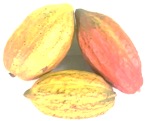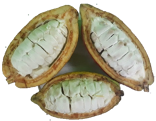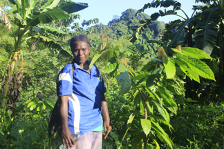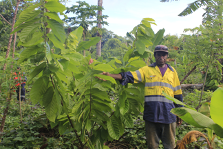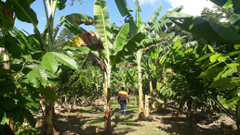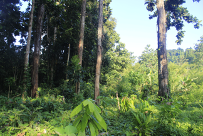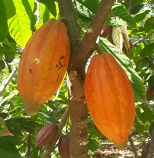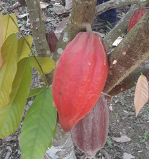At a Glance
- Population: 8,935,000
- Capital: Port Moresby
- Cocoa industry size: US$85,800,000
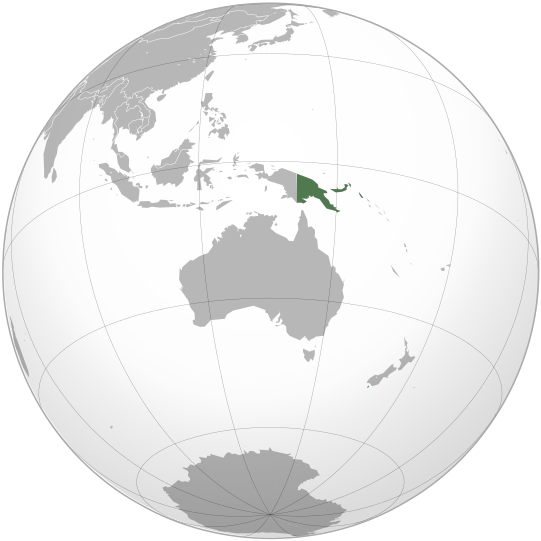
Image credit: Wikimedia
History of Cocoa
Cocoa (heirloom Trinitario) was introduced to Papua New Guinea (PNG) from Samoa by German settlers in 1889. Initially, the cocoa was produced by plantation, and in the 1950s accounted for 95% of export volume. The prominence of sure market and good prices propelled its expansion from Easter New Britain to Bouganville, Madang and Oro Provinces.
In 1965, smallholder farmers started to grow the crop using subsistence farming methods. Today, cocoa is a US$85,800,000 industry in PNG and accounts for about 15% of agriculture commodity exported. It supports more than 150,000 households and provides income for at least 20% of the population who are smallholder farmers. (source)
Flavour Attributes
PNG cocoa is unbeatable with its exotic and unique qualities. The quality of cocoa is based on the best practices of harvesting, fermenting, and solar drying which produces dark colored chocolate, specific aroma, texture and astringency. (source) Globally, PNG accounts for about 1% of the total world production. However, PNG cocoa has earned a world reputation of being one of the finest quality producers and rated by the International Cocoa Organisation (ICCO) as having a “70% fine or flavor status.” (source)
PNG is one of the most exotic and mysterious places in the world with fertile soil conditions for growing cocoa. This is responsible for producing some of the world’s best cocoa quality. This, coupled with wet warm climate causing rains throughout the year on the rainforest produces good flowers, pods, and ultimately beans.
In PNG, cocoa is grown up to 800m altitude, where annual rainfall ranges from 1800 mm to over 5000 mm. Seasonality data indicate that more cocoa is produced between May and July than in other months, but the pattern varies considerably from place to place.

Nursery on Big Tabar Island with seedling distribution in progress for smallholders 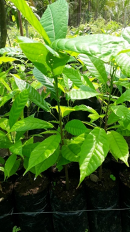
Closeup of healthy plants 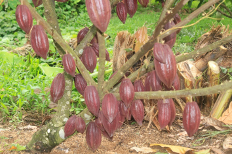
Coca pods cloned from Tinitario 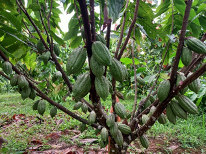
Cocoa pods cloned from the Upper Amazon 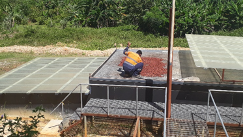
Solar drying technology 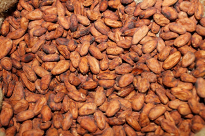
High quality beans from improved technology
Farming Systems
The smallholder cocoa production is on average around 300 – 600 kg per hectare. However, farmers growing the new hybrid clones are now increasing to 900 kg/ha with some achieving 2.0 to 3.0 tones/ha in the Productive Partnership in Agriculture Project (PPAP). Smallholders adopt cocoa into their subsistence farming system as a way of life that fits into the socio-cultural practices.
Typical subsistence farming system in PNG resembles agroforestry where other economic crops such as coconut and culturally valued food crops (banana, casava, etc.), food trees (fruits, nuts, green vegetables, and oils), and palms (betelnut and coconuts) are intercropped. This farming system ensures diverse income for the households, women participation, environment sustainability and climate change mitigation.
Typically, smallholders’ cocoa trees are grown under canopy with minimal management and less farm input, resulting in lower production per hectare. In contrast, a cocoa block under high intensity exposed to open sunlight requires better management and fertilizer inputs to increase high production per hectare. It is becoming obvious that cocoa farmers must be upscale to become commercial farmers with market connection and smallholder empowerment. Thus, Cocoa Board of PNG, with other stakeholders is intervening to improve and increase production in PNG.
A nine year PNG cocoa development project loan-financed by the World Bank, IFAD and EU called PPAP in cocoa has just been completed. Some 25,000 cocoa households benefited with millions of clonal cocoa seedlings distributed, central fermentaries and control units established, and some 15 different kinds of training modules. The training modules are focused on best management practices and cocoa farming as a business. The PPAP was a new model of service delivery via Private Sector and has proved to be the most successful agriculture development project in PNG’s history.
Harvesting & Marketing
Cocoa dealers are licensed to buy wet bean from producers who are registered in PNG. Dealers process the bean (which involves fermentation and drying) and sell it to exporters. The beans are processed using stringent fermentation and solar drying technology to process high quality beans which are converted into chocolate. A PNG farmer receives a very high free on board (fob) price, usually well over 80%, making it one of the best worldwide.
Contact in Country
Karen James
Chief Executive Officer, Business for Development
karen.james@businessfordevelopment.org
businessfordevelopment.org
M +61 (0) 419 921 362

